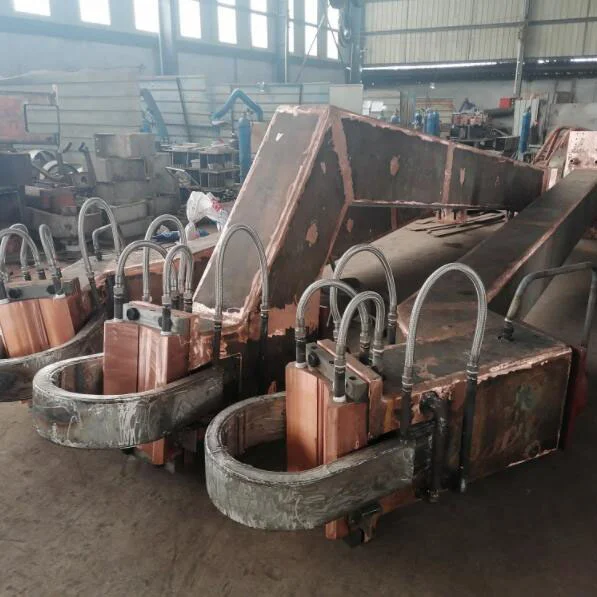Ferro alloy plants are complex industrial facilities that produce essential alloys used in various manufacturing processes, including steel production, foundries, and metalworking. A crucial component in the operation of these plants is the power conducting arm, a specialized electrical equipment that plays a vital role in powering furnaces, smelters, and other key processes. In this article, we will delve into the specific functions and applications of power conducting arms in ferro alloy plants, highlighting their importance in ensuring efficient power distribution, reliable operation, and optimal production performance in this critical sector of the metallurgical industry.
Introduction to Power Conducting Arms in Ferro Alloy Plants
Power conducting arms, also known as power conducting systems or power supply systems, are essential components in ferro alloy plants that facilitate the transfer of electrical power to various equipment and machinery. These arms are designed to provide a reliable and efficient means of delivering electrical energy to furnaces, smelters, and other high-power consuming devices used in the production of ferro alloys. Power conducting arms are typically made of high-quality materials such as copper or aluminum to ensure optimal conductivity and heat dissipation, allowing for safe and reliable power transmission in the demanding operating conditions of ferro alloy plants.

Power Distribution and Furnace Operation
One of the functions of power conducting arms in ferro alloy plants is to distribute electrical power to electric arc furnaces, induction furnaces, and other heating equipment used in the production of ferro alloys. These furnaces rely on high-power electrical currents to generate the intense heat required to melt and refine raw materials into the desired alloy compositions. Power conducting arms play a critical role in delivering the necessary electrical energy to the furnaces, ensuring consistent and controlled heating processes that are essential for achieving the desired alloy properties and quality standards. By providing a stable and efficient power supply, power conducting arms contribute to the overall efficiency and productivity of the furnace operations in ferro alloy plants.
Heat Recovery Systems and Energy Efficiency
In addition to powering furnaces, power conducting arms are also utilized in heat recovery systems that capture and utilize waste heat generated during the alloy production process. Heat recovery systems help optimize energy efficiency in ferro alloy plants by recovering and repurposing excess heat from furnace operations to preheat air, water, or other process streams. Power conducting arms play a crucial role in transferring electrical power to heat recovery units, enabling the efficient operation of these systems and maximizing energy savings. By incorporating power conducting arms in heat recovery applications, ferro alloy plants can enhance their sustainability efforts, reduce energy consumption, and lower operational costs while minimizing environmental impact.
Control Systems and Process Monitoring
Power conducting arms are integral components of the control systems and process monitoring infrastructure in ferro alloy plants, providing a reliable interface for managing and regulating electrical power distribution throughout the facility. These arms are equipped with advanced monitoring and control features that allow operators to adjust power levels, monitor energy consumption, and optimize process parameters in real-time. Power conducting arms enable precise control over electrical loads, voltage levels, and power distribution patterns, ensuring safe and efficient operation of equipment while maximizing production output and quality. By incorporating power conducting arms into the control systems of ferro alloy plants, operators can enhance process automation, improve system reliability, and streamline maintenance procedures for enhanced operational efficiency.

Safety Features and Hazard Mitigation
Safety is a top priority in ferro alloy plants, where high temperatures, electrical currents, and hazardous materials pose inherent risks to personnel and equipment. Power conducting arms are designed with built-in safety features and hazard mitigation measures to ensure the protection of plant operators, maintenance staff, and the surrounding environment. These safety features may include insulation systems, fault detection mechanisms, emergency shutdown protocols, and grounding systems that prevent electrical shocks, overheating, or equipment malfunctions. Power conducting arms play a critical role in maintaining a safe working environment in ferro alloy plants by minimizing the risk of electrical accidents, fire hazards, and equipment damage, thereby safeguarding the well-being of plant personnel and ensuring operational continuity.
Maintenance and Reliability Considerations
Regular maintenance and inspection of power conducting arms are essential to ensure their continued reliability and performance in ferro alloy plants. Routine checks for wear and tear, insulation integrity, electrical connections, and cooling systems are necessary to identify and address potential issues before they escalate into operational disruptions. Proper maintenance practices, such as cleaning, lubrication, and preventive repairs, can extend the lifespan of power conducting arms, reduce downtime, and optimize their efficiency in power distribution applications. By implementing a proactive maintenance strategy for power conducting arms, ferro alloy plants can enhance equipment reliability, minimize unplanned outages, and maximize production uptime to meet production targets and quality standards consistently.
Conclusion
In conclusion, power conducting arms play a critical role in the efficient and reliable operation of ferro alloy plants, providing essential electrical power distribution solutions for furnace operations, heat recovery systems, process control, safety management, and maintenance reliability. By incorporating advanced power conducting arms into their infrastructure, ferro alloy plants can optimize energy efficiency, enhance production performance, ensure operational safety, and achieve sustainable manufacturing practices. The versatile applications and functionalities of power conducting arms make them indispensable components in the complex and demanding environment of ferro alloy production, enabling plant operators to meet the challenges of modern metallurgical processes while driving efficiency, productivity, and innovation in the industry.
The Role of Power Conducting Arms in Modern Electrical Infrastructure
www.timonic.com.cn
Timonic (Suzhou) Technology Co., Ltd ( Timonic )